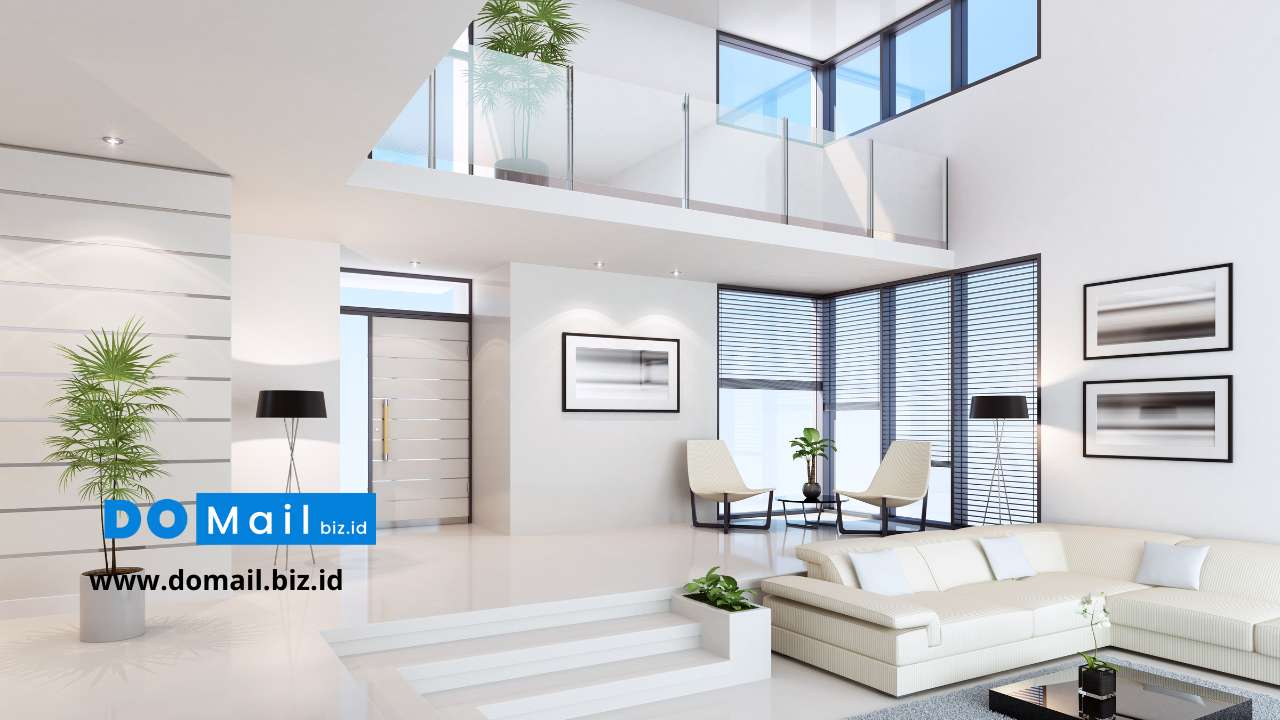Creating an office that boosts productivity involves more than just arranging desks and chairs. A well-designed workspace can inspire creativity, foster collaboration, and create an environment where employees feel comfortable and motivated. You can ask an interior contractor for help and focusing on elements like layout, furniture, lighting, colors, and even acoustics, you can transform your office into a productivity powerhouse. Let’s explore the key elements you need to consider.
1. Plan the Layout with Purpose
The layout of your office plays a crucial role in determining how efficiently your team can work. A well-thought-out layout provides enough space for individuals to focus while also encouraging team collaboration when needed.
Open vs. Private Spaces: Determine the right balance between open areas and private workspaces. Open spaces are great for collaboration, while private pods or rooms are perfect for focused, uninterrupted work.
Flexible Layout: Include flexible work areas, such as hot desks or moveable furniture, that allow employees to choose where they work based on the tasks they are doing. This flexibility can greatly enhance both comfort and productivity.
Dedicated Zones: Create specific zones for different activities. For example, have a quiet zone for focused work, a collaborative area for team projects, and a break area where employees can relax and recharge.
2. Ergonomic Furniture for Comfort
Comfort is directly linked to productivity. If employees are uncomfortable, they are more likely to experience fatigue, back pain, and other health issues, which will negatively affect their focus and output.
Ergonomic Chairs and Desks: Invest in ergonomic chairs that provide good lumbar support and desks that can be adjusted for height. Consider sit-stand desks to allow employees the flexibility to change positions throughout the day.
Proper Monitor Placement: Ensure that computer monitors are at eye level to prevent neck strain. Providing adjustable monitor arms can help employees set up their workstations comfortably.
Flexible Seating Options: In addition to standard desks and chairs, consider incorporating alternative seating like standing desks, balance ball chairs, or even comfortable sofas in break areas. This allows employees to work in different positions, which can improve comfort and creativity.
3. Lighting that Supports Productivity
Lighting plays a significant role in how productive employees are throughout the day. The wrong type of lighting can lead to eye strain, headaches, and even affect mood.
Natural Light: Maximize natural light as much as possible. Studies have shown that exposure to natural light improves mood, energy, and productivity. Position desks near windows to take advantage of daylight.
Artificial Lighting: Use a combination of overhead lights and task lighting to provide balanced illumination. Avoid harsh fluorescent lights, and opt for LED lights with adjustable brightness to create a comfortable work environment.
Avoid Glare: Ensure that computer screens are positioned in a way that reduces glare from windows or overhead lights. Using blinds or curtains can also help control the amount of sunlight entering the office.
4. Use Colors Strategically
Colors have a psychological impact on how people feel and work. The right colors can help stimulate creativity, reduce stress, and improve focus.
Blue and Green: Blue is known for promoting focus and efficiency, making it an ideal color for areas where employees need to concentrate. Green is also a calming color that helps reduce anxiety, making it perfect for collaborative areas.
Yellow for Creativity: Yellow is often associated with energy and creativity. Use yellow in areas where brainstorming and innovative thinking take place.
Avoid Overuse of Red: While red can be energizing, it can also create feelings of stress if overused. It’s best used in moderation, perhaps as an accent color.
5. Control Noise Levels for Better Focus
Noise can be a major distraction in the workplace, especially in open office environments. Managing sound levels effectively can significantly improve productivity.
Acoustic Panels: Use acoustic panels on walls or ceilings to absorb excess noise and reduce sound distractions.
Quiet Zones: Designate specific quiet areas where employees can go for focused work without interruptions.
White Noise Machines: White noise machines can be effective in masking background noise, creating a more consistent sound environment that helps employees stay focused.
6. Incorporate Nature and Biophilic Elements
Introducing natural elements into your office can have a positive effect on employees' well-being and productivity.
Indoor Plants: Place indoor plants throughout the office. Plants not only purify the air but also help reduce stress and boost mood. They add a sense of calm and make the workspace more inviting.
Natural Materials: Incorporate natural materials like wood, stone, or bamboo into your office design. This helps create a warm and welcoming environment that feels more connected to nature.
Views of Nature: If possible, position workstations so that employees have a view of nature outside. Studies have shown that even a simple view of greenery can enhance concentration and satisfaction.
7. Create Breakout Areas for Rest and Recharge
Breaks are crucial for maintaining productivity throughout the day. Designating areas where employees can take a break can help them recharge and come back to work with renewed energy.
Relaxation Zones: Create a comfortable space with sofas or beanbags where employees can relax, have informal conversations, or simply take a mental break.
Game or Wellness Areas: Include a game area or wellness space where employees can engage in fun activities or practice mindfulness. These areas help reduce stress and foster a positive work culture.
Café or Dining Area: A well-designed dining area encourages employees to take proper lunch breaks, which is important for maintaining productivity and energy levels throughout the day.
8. Use Technology to Enhance Productivity
Incorporate technology that supports collaboration and productivity in your office design.
Collaboration Tools: Install screens or smart boards in meeting rooms to facilitate presentations and group discussions. Use project management software that allows employees to share ideas easily.
Charging Stations: Provide plenty of charging stations throughout the office so employees can easily keep their devices powered without having to disrupt their workflow.
WiFi and Connectivity: Ensure that your office has strong and reliable WiFi coverage in all areas so that employees can stay connected, whether they’re at their desks or in a meeting room.
9. Declutter and Organize the Space
A cluttered workspace can be distracting and reduce productivity. Keep the office organized and free from unnecessary items.
Storage Solutions: Provide enough storage solutions, such as cabinets, shelves, and lockers, so that employees can keep their desks clean and tidy.
Cable Management: Use cable organizers to keep electrical and data cables neatly arranged. This not only improves aesthetics but also prevents tripping hazards.
Minimalist Design: Opt for a minimalist approach to avoid a cramped office space. Only include essential items and decorations to create a clean, clutter-free environment.
10. Encourage Personalization
Allowing employees to personalize their workspaces can make them feel more comfortable and motivated.
Decorate Desks: Encourage employees to add small personal touches to their desks, like family photos, small plants, or artwork. This helps them feel more connected to their work environment.
Collaborative Customization: Involve the team in designing shared spaces, such as choosing wall colors, décor, or artwork. This creates a sense of ownership and belonging.
FAQ - Office Interior Design for Productivity
Q: How can office layout impact productivity?
A: The layout of an office affects how employees interact and move throughout the space. A well-planned layout encourages collaboration, minimizes distractions, and provides enough space for focused work.
Q: Why is natural light important in an office?
A: Natural light has been shown to improve mood, energy, and productivity. It helps regulate the body’s natural circadian rhythms, which keeps employees alert and focused during the workday.
Q: What colors are best for office productivity?
A: Blue and green are great for enhancing focus and reducing stress, while yellow can boost creativity. It’s best to use colors strategically based on the purpose of each area in the office.
Q: How can ergonomic furniture boost productivity?
A: Ergonomic furniture reduces the risk of physical strain and discomfort, allowing employees to work comfortably for longer periods. This leads to improved focus and overall productivity.
Q: What role does noise control play in office design?
A: Noise control is crucial for minimizing distractions in the workplace. Acoustic panels, quiet zones, and white noise machines can all help create a quieter work environment, which supports better concentration.
Q: How can office interior design impact employee well-being?
A: A well-designed office with natural elements, comfortable furniture, and thoughtful layouts can improve employee well-being by reducing stress, enhancing mood, and supporting physical health.
Q: What are some easy ways to make an office more productive?
A: Simple changes like improving lighting, adding plants, decluttering, and providing ergonomic seating can make a big difference in productivity.
Q: Why should offices have breakout areas?
A: Breakout areas give employees a space to relax and recharge, which is essential for maintaining energy levels and productivity throughout the day.
Recommended Office Interior Design Inspiration
To get some visual inspiration for your office interior design, check out the following resources:
Pinterest: Search for “productive office interior design” on Pinterest for a variety of creative ideas that you can incorporate into your own space.
Houzz: Browse through Houzz's office interior design photos to see examples of modern, collaborative, and ergonomic office spaces.
ArchDaily: ArchDaily features office design projects from around the world, offering a closer look at innovative layouts and design trends.
Read also: Latest Trends in Interior Design by Professional Interior Contractors in 2024

 9 months ago
9 months ago








 English (US) ·
English (US) ·  Indonesian (ID) ·
Indonesian (ID) ·